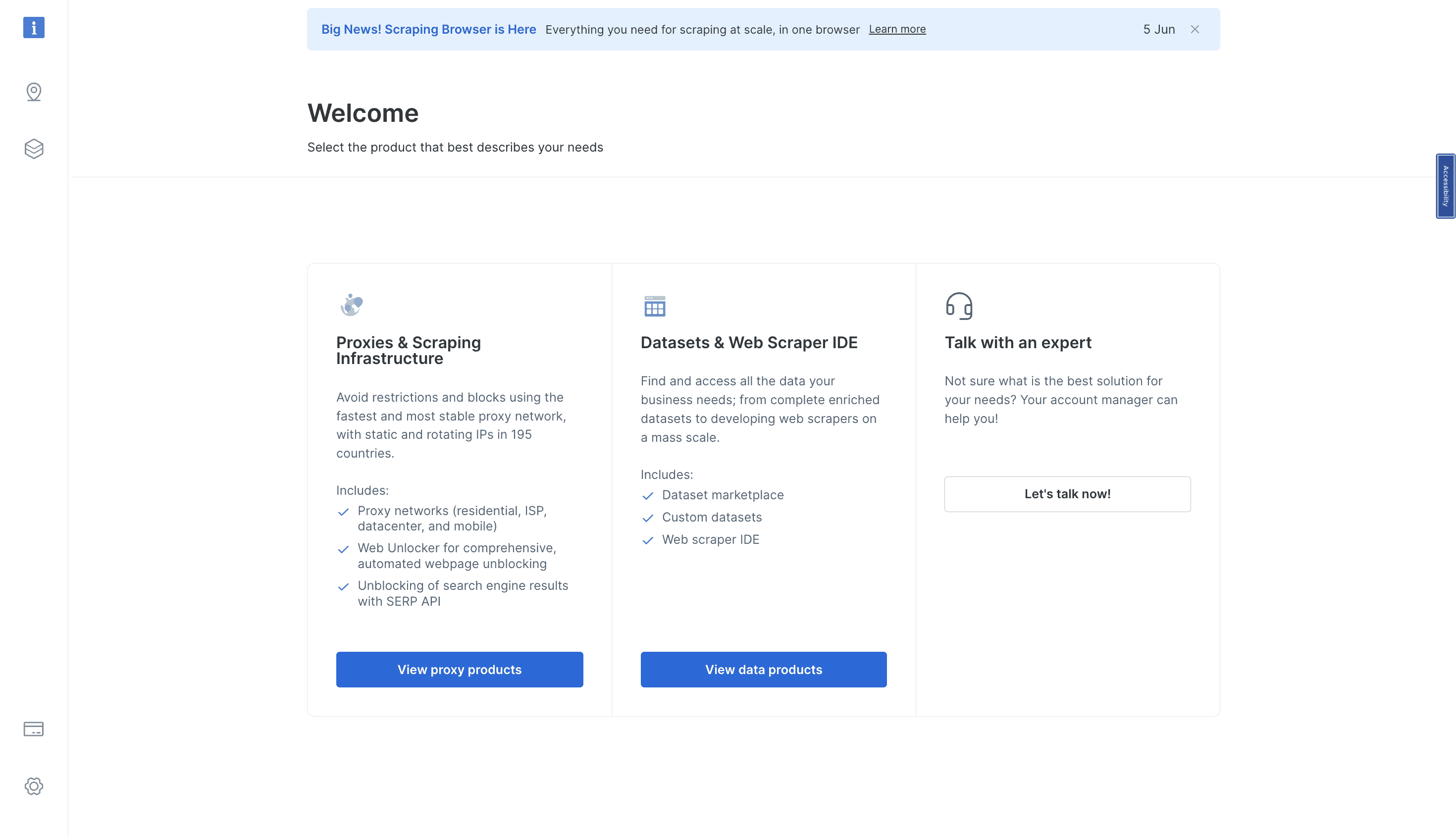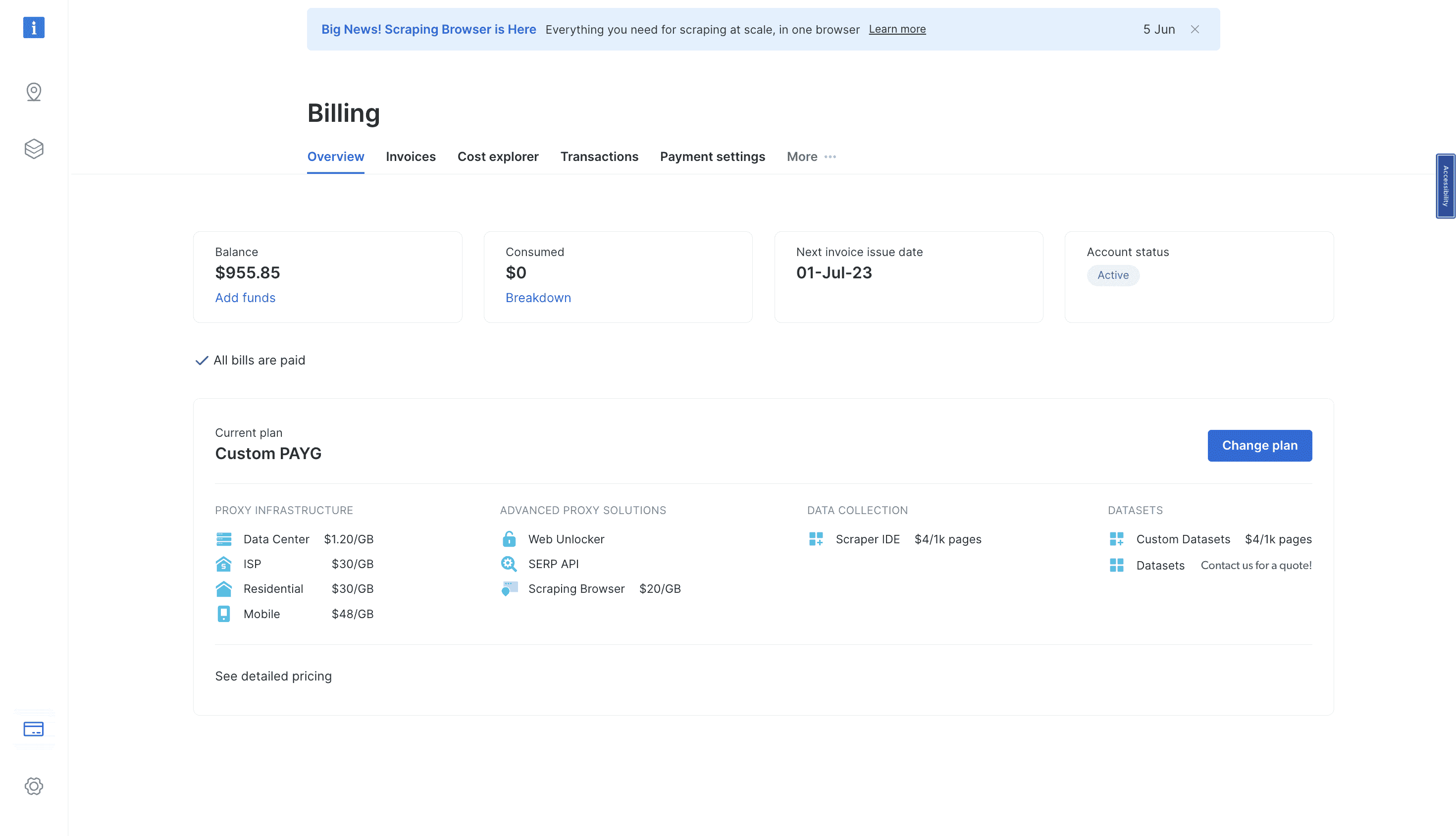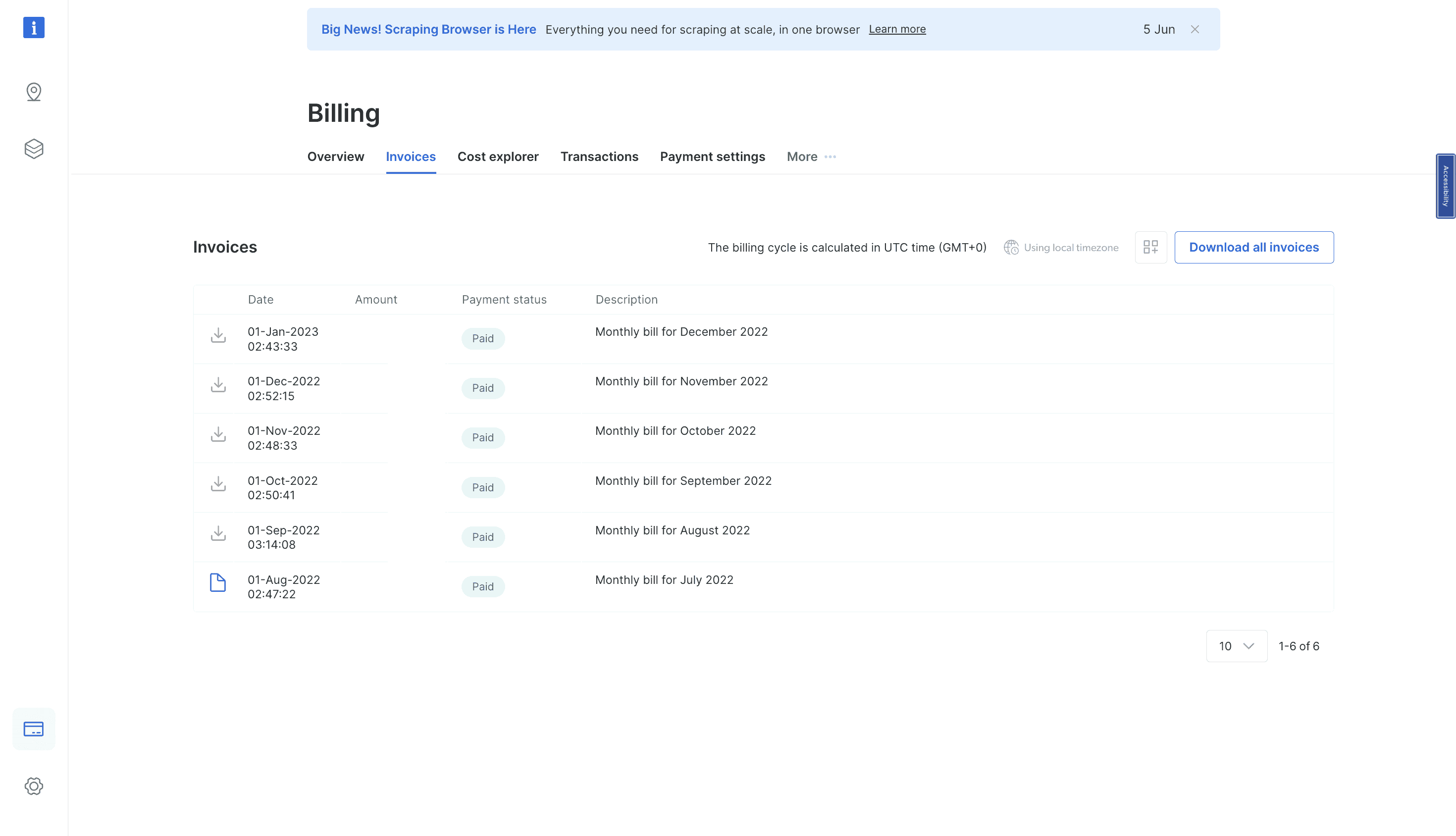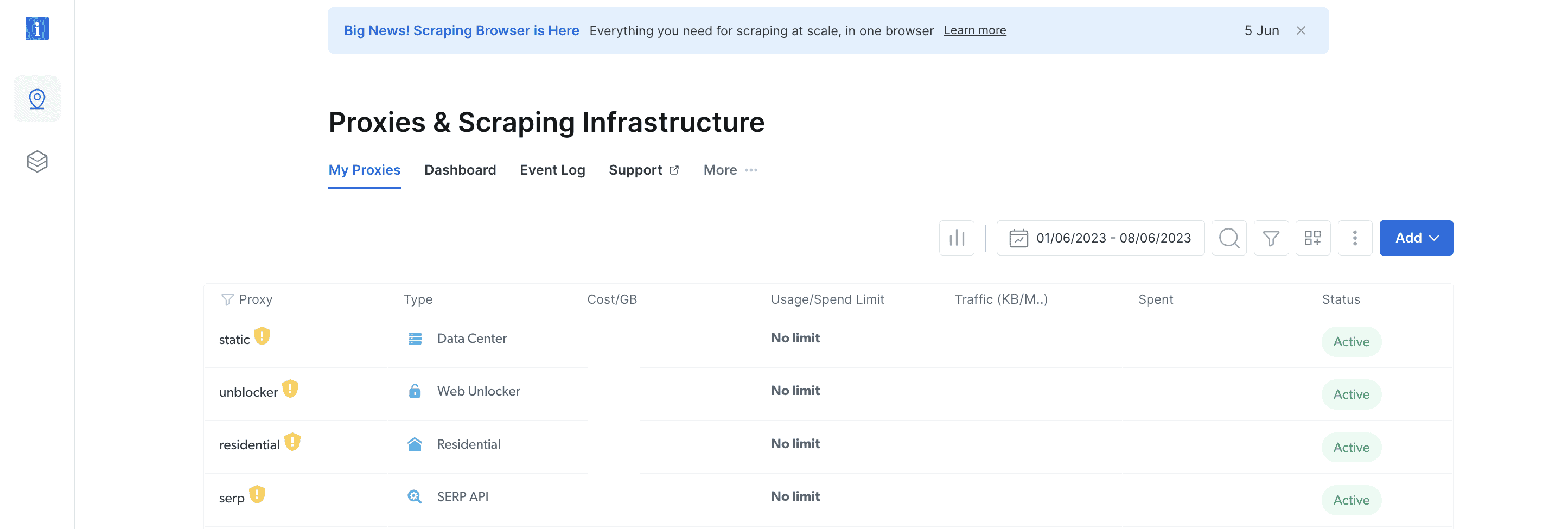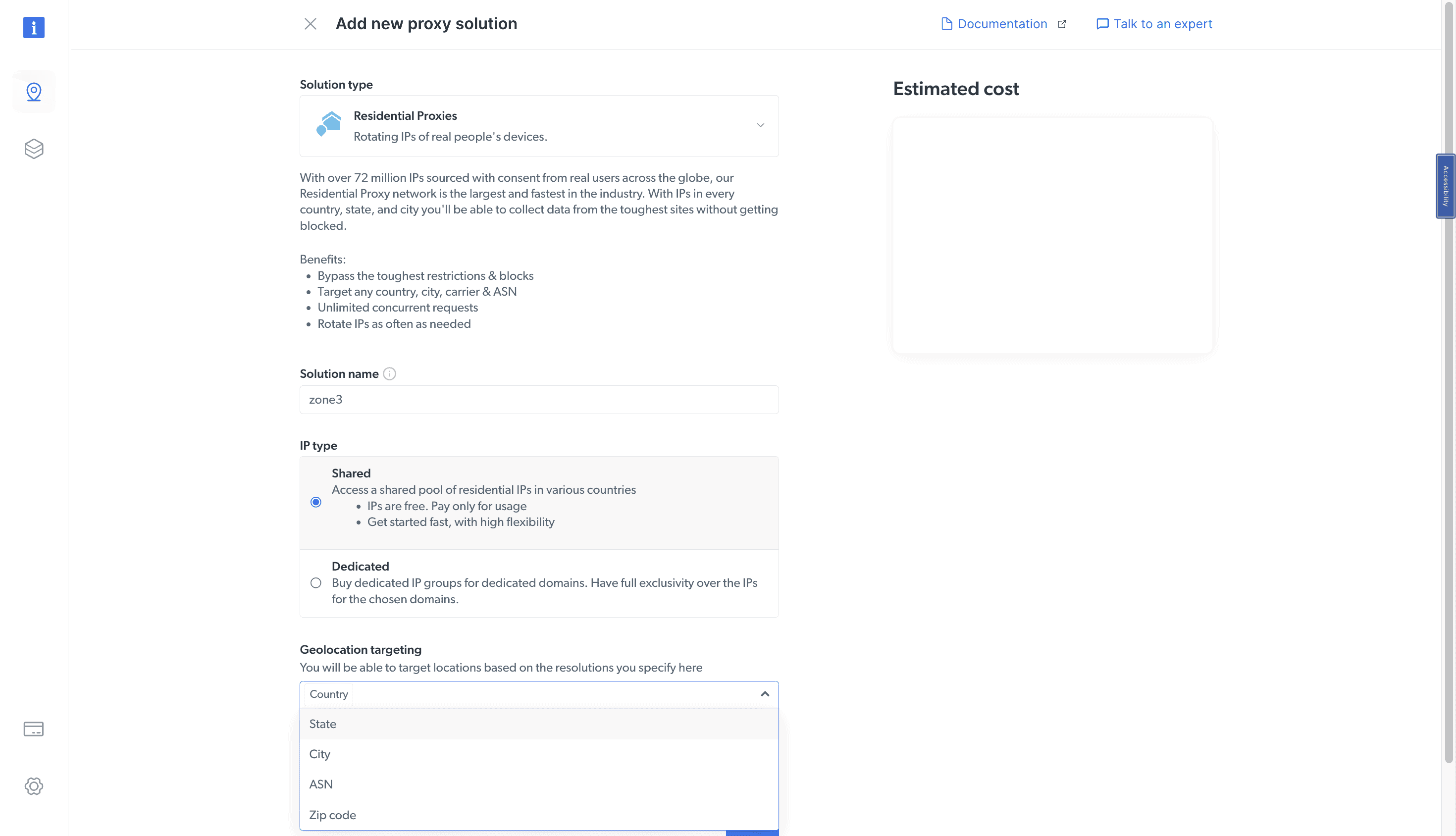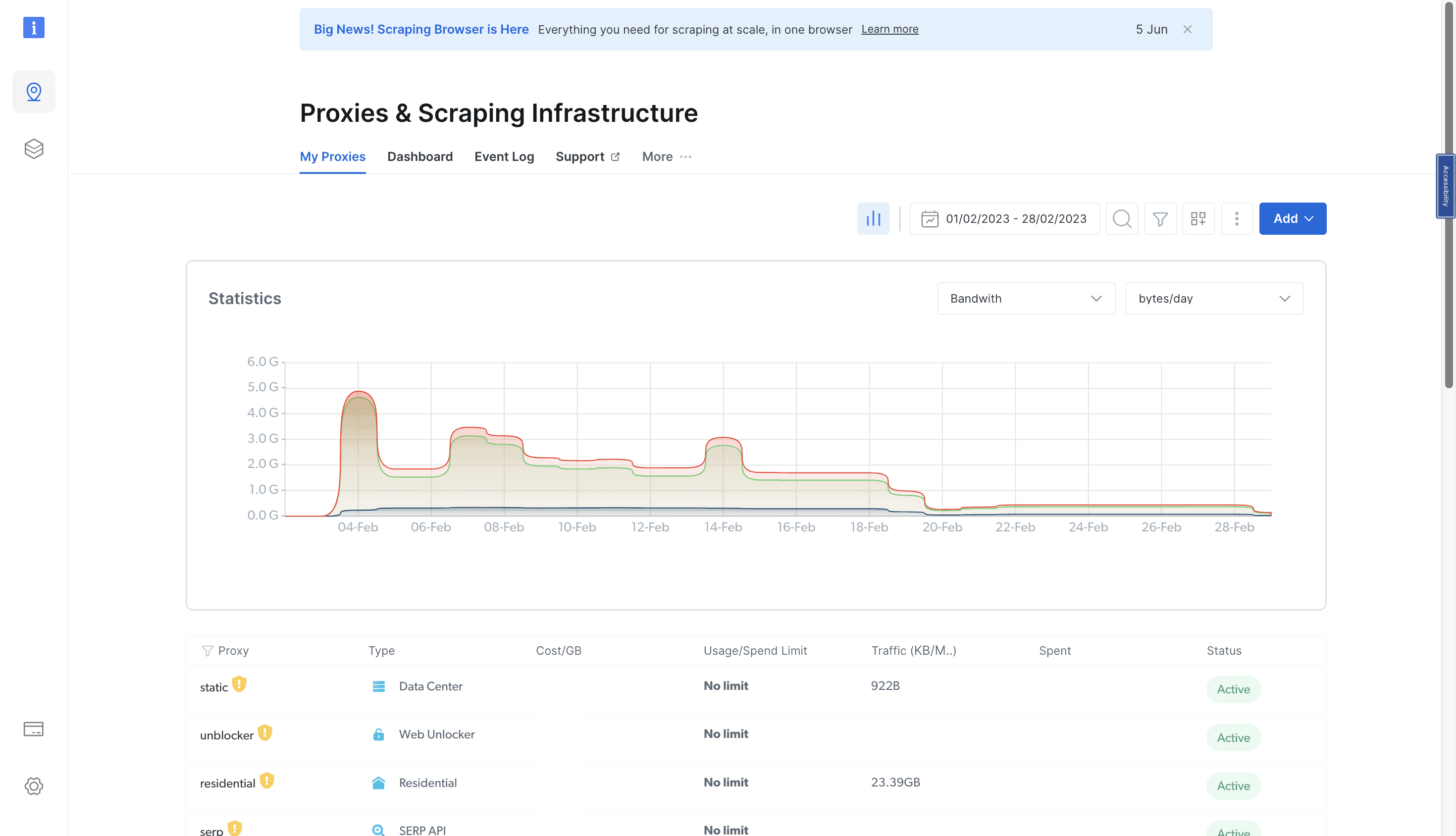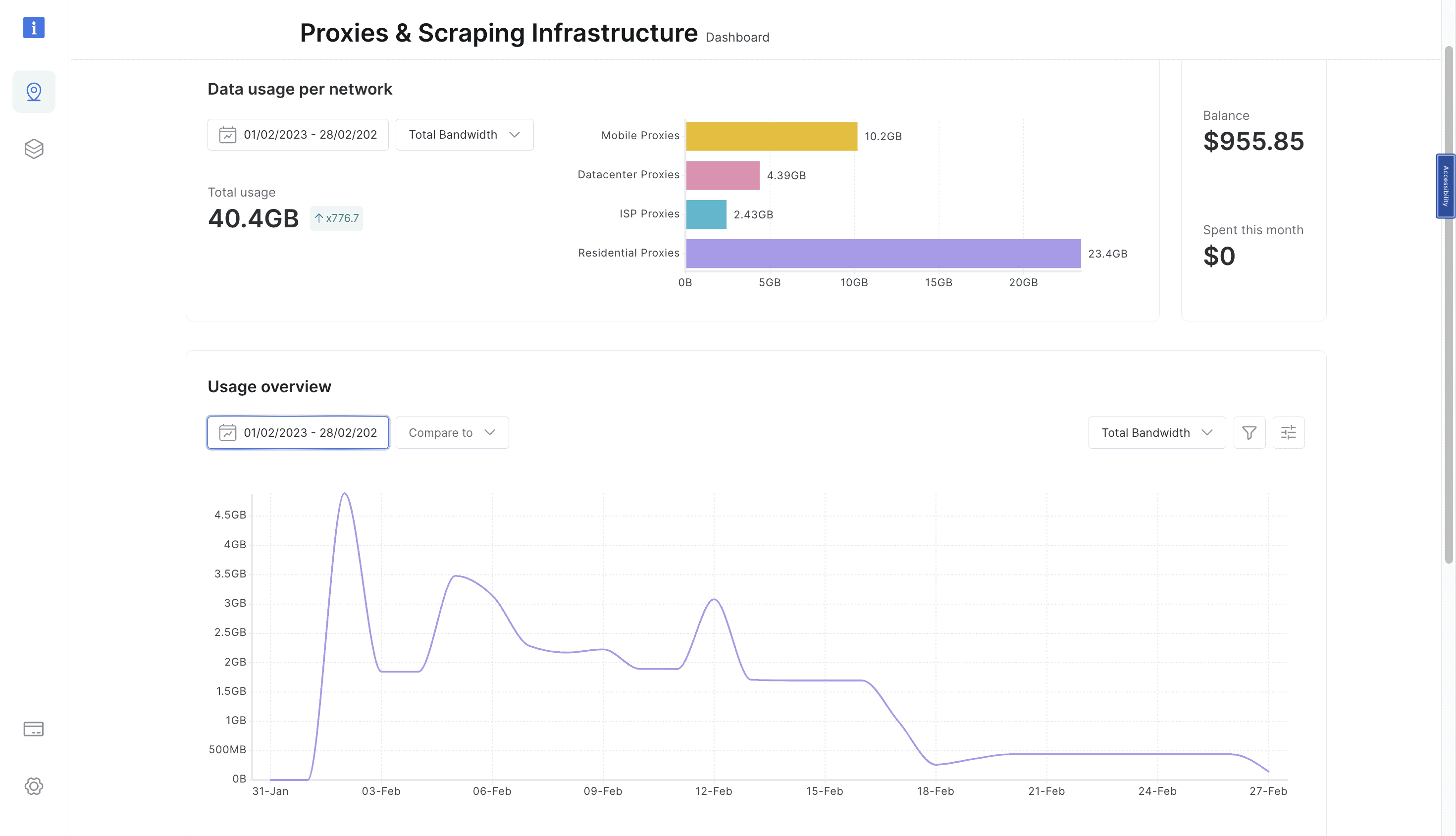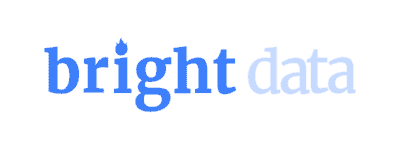
Bright Data Review
Bright Data has many features and an impressive data collection infrastructure. However, its prices and usage terms are not for everyone.
Add up to $500 to your account, and Bright Data will double the amount.
When it comes to proxies, Bright Data is one of those default options that you compare others against. It has everything for everyone (minus the shadier use cases), a proven history, and strong brand visibility. The company also offers robust management tools for enterprise clients, constantly reinforcing them with novel features. For this, it received our Most Innovative Provider award in 2023 and Best Platform for Proxies in 2024.
So, is Bright Data a no-brainer? Not necessarily. Despite all it offers, the company can’t be the best in all scenarios. That’s where cheaper or more specialized providers find their opportunity to slip through. And in recent years, the competition has only become tougher, especially in Bright Data’s prized enterprise segment.
Today, we’ll try to identify those cracks and how they can impact your decision. The review includes general information, as well as in-depth performance benchmarks based on weeks of testing. Let’s begin!
News about Bright Data
-
By Adam Dubois
- Provider News
-
By Adam Dubois
- Provider News
-
By Adam Dubois
- Provider News
General Information
- Country: Israel
- Founded: 2014
- Employees (LinkedIn): 400+
- Proxy networks: Datacenter, ISP, residential, mobile
- Web scrapers: General-purpose API, specialized APIs for 200+ websites, web scraping IDE, cloud browsers
- Other services: Datasets, e-commerce insights, no-code AI tool for building datasets
- Supporting tools: Browser extension, open source proxy manager
- Price range: Premium
- Starting price: $1
- Payment methods: Credit card, PayPal, wire transfer, Alipay, Payoneer
- Trial: 7 days for companies
Bright Data is an Israeli provider of data collection infrastructure. It’s currently owned by a UK-based equity firm called EMK Capital. The company offers access to every kind of proxy server, multiple data collection APIs, a cloud-based tool for developing scrapers on Bright Data’s infrastructure, and even pre-collected data sets.
Most old-timers remember Bright Data by a different name, Luminati. The company rebranded in early 2021, citing negative connotations associated with the name. (To be fair, Luminati does sound awfully familiar to a certain organization.)
Being a general-purpose provider, Bright Data tries to serve every use case it deems acceptable. The list includes many forms of web scraping for price comparison, SEO, and other purposes – even sneaker copping is on the table. But as far as proxy providers go, Bright Data is considered very strict, and it won’t hesitate to deny questionable uses.
Bright Data was one of the first services to introduce residential proxies – IPs borrowed from computers and phones of real people. At the time when most competitors still sold datacenter IPs, this gave the company a big advantage and allowed it to grow into a leading proxy provider. Despite tightening competition, Bright Data remains one to this day, boasting top universities and Fortune 500 companies among its clients.
Bright Data also cares deeply about the ethical aspect of sourcing and using proxies. It was among the first to openly talk about how it acquires residential IPs. What’s more, it has strict procedures for vetting customers and preventing abuse (you can watch our video interview on ethics with Bright Data’s CEO here). The company even went as far as to reduce its proxy pool by 10% to cut off unethical partners. Despite this, Bright Data has had its share of controversy over the years, such as with Hola VPN or piracy app Mobdro.
For the last few years, Bright Data has been expanding its scope of services. While proxies remain important, they now have to share focus with other tools. Bright Data’s end goal is to become the go-to source for web data, whether you’re a developer or a company with no web scraping experience. Beginning with 2025, Bright Data became laser focused on AI clients and use cases, addressing them above everything else.
Bright Data Proxy Networks
Bright Data offers all four kinds of proxy servers:
- Datacenter proxies from cloud hosting providers. They’re available in around 100 locations in shared, dedicated lists, or a pool of IPs.
- ISP (static residential) proxies which are hosted in data centers but associated with residential ISPs. They come from around 50 locations in the same formats as the datacenter service.
- Residential proxies from every country in the world. One of Bright Data’s unique selling points is dedicated residential IPs – they ensure exclusive access to a group of proxies with the same parameters.
- Mobile proxies of the peer-to-peer variety, also available worldwide.

In brief, whatever you may need, Bright Data has it. We explore the provider’s proxies below:
🌎 Pool Size & Coverage
| Residential | Mobile | Datacenter | ISP | |
| Advertised pool | 150 million | 7 million | 1.3 million | 1.3 million |
| Formats | Shared or dedicated pool | Shared pool | Pool with 40k IPs, shared or dedicated list | Pool with 40k IPs, shared or dedicated list |
| Locations | Global | Global | ~100 | ~50 |
| Filtering | Global, country, state, city, ASN, ZIP, OS | Global, country, state, city, ASN, carrier | Global, country, state, city | Global, country, state, city |
| Other filters | IPv4 only, IPv4+IPv6, IPv6 only |
Bright Data advertises impressively-sized proxy networks, no matter the proxy type. As such, they cover a large chunk of the globe, even when talking about datacenter IPs. Furthermore, you get precise filtering options – in some cases, they include ZIP codes and even operating systems.
The provider’s datacenter and ISP proxies can be shared, dedicated, or accessible as a pool, based on your preferences. Interestingly, it’s possible to get a group of residential IPs with identical parameters for your exclusive use with certain domains.
With Bright Data’s residential proxy network, you can also choose which IP protocol to use. According to the docs, the IPv6-only pool includes roughly 150,000 proxies and has a fallback mechanism for websites that don’t support this protocol.
📋 Features
- Connection method: Gateway address
- Rotation: Every request, as long as available (customizable with Proxy Manager)
- Protocols: HTTP, HTTPS, SOCKS5 (with UDP)
- Concurrency: Unlimited threads & ports
- Authentication: Credentials, IP whitelist, API key
- Other: Request caching, whitelisting/blacklisting domains, DNS resolution
All four of Bright Data’s proxy types use gateway servers to connect you to proxies. They’re strategically placed in dozens of locations to ensure efficient routing. You can actually specify which load balancer to use, but this is rarely needed in practice.
Bright Data’s proxy networks are stacked with features. The rotation options, while basic using only the dashboard, become highly customizable once you fire up the provider’s proxy manager. There are no concurrency limits, as long as you have enough balance in your account.
Bright Data offers other unique functionality. For example, you can choose to receive cached pages if someone had opened those URLs within several hours. This will return results faster and reduce your expenditure by 5%. Then, you can configure the proxy networks to only open certain domains. And there’s even an option to choose where the DNS gets resolved – at the gateway or the proxy server.
In addition to HTTP, you can connect using the HTTPS and SOCKS5 protocols. Aside from the standard 80 and 443 ports, Bright Data supports any port over 1024 for its datacenter and ISP proxies, and ports 8080, 8443, 5678, 1962, 2000, 4443, 4433, 4430, 4444, and 1969 (their number may change over time) for the other two proxy networks.
⚙️ Integration Examples
- Basic request: brd.superproxy.io:33335@brd-customer-ID-zone-NAME:PASSWORD
- Using filters: brd.superproxy.io:33335@brd-customer-ID-zone-NAME-country-us-city-sanfrancisco-asn-56386-os-windows:PASSWORD
- Establishing a session: brd.superproxy.io:33335@brd-customer-ID-zone-NAME-session-ID:PASSWORD
- Using IP whitelisting: For account security purposes only
- Selecting a particular datacenter/ISP proxy: brd.superproxy.io:[email protected]:PASSWORD
Bright Data uses one address to access all proxy servers, and two ports: one for HTTP(S) requests and the second for SOCKS traffic.
All modifications, such as location filtering, sessions, and even selection of proxy types, are done by modifying the username. IP whitelisting is mostly meant for securing the account, and it doesn’t come with its own configuration.
If you need to select a specific IP with datacenter and ISP proxy plans, this too can be achieved by appending the IP address as parameter.
💵 Pricing Plans
| Residential | Mobile | Datacenter | ISP | |
| Model | Pay as you go, subscription | |||
| Format | Traffic | Traffic | Traffic or IPs | Traffic or IPs |
| Modifiers | Dedicated IPs | |||
| Starting price | $4 for 1 GB | $8 for 1 GB | $0.6 for 1 GB / $14 for 10 shared IPs / $22 for 10 dedicated IPs | $15 for 1 GB / $18 for 10 shared IPs / $35 for 10 dedicated IPs |
| Trial | 7 days for companies | |||
Bright Data offers both subscription and usage-based access. You start off paying as you go, and if your usage reaches $500 or more, you can choose to commit. There are three commitment levels ($500, $1,000, $2,000), each unlocking better rates. The plans aren’t fixed, meaning that you can freely use proxies over the commitment threshold.
The pay-per-IP datacenter and ISP proxy plans have their own scaling levels which fall outside Bright Data’s unified pricing scheme.
Bright Data is definitely a premium provider, meaning that it costs more than most alternatives. This stands especially true for its rotating ISP proxy network, which is a daylight robbery. The residential and datacenter proxies, while expensive, carry a more competitive price tag.
📊 Performance Benchmarks
We last tested Bright Data’s proxy networks in March 2024, for the annual Proxy Market Research.
#1: Pool size & composition
- Requests: Global pool – 1.2M, 21 days; country pools – 560k, 14 days; Australia – 140k, 7 days
- Residential percentage: IP2Location database, Usage type data point (ISP, ISP/MOB, MOB IPs)
| Gateway | Unique IPs | Residential % |
| Global | 885,512 | 98.59% |
| US | 392,272 | 99.05% |
| UK | 200,759 | 99.81% |
| EU* | 266,882 | 98.79% |
| Brazil | 175,464 | 97.58% |
| India | 189,973 | 98.10% |
| Australia | 13,775 | 99.36% |
* Combines Germany, France, Spain, Italy, the Netherlands.
Comparison with other providers
#2: IP quality (IPQualityScore data)
- Global pool: 20,000 checks
- US pool: 10,000 checks
| Avg. fraud score | Proxy % | Frequent abuser | |
| Global | 44.52 | 47.52% | 1,412 |
| US | 71.76 | 75.81% | 1,400 |
Bright Data’s proxies looked fairly well: better in the Global pool, and somewhat poorer when checking only US-based IPs. This shows that the proxy network is being used, but it’s not as abused as something like Infatica or IPRoyal.
#3: Infrastructure performance
- Parameters: Same as the pool test
- Target: Nearest server of a global CDN (<10 KB)
- Our server locations: DE for Global & European pools, US for American & Brazil pools, Singapore for Indian & Australian pools
| Gateway | Avg. success rate | Avg. response time |
| Global | 98.96% | 1.12 s |
| US | 99.14% | 1.00 s |
| UK | 99.01% | 0.75 s |
| EU | 99.12% | 0.80 s |
| Brazil | 99.51% | 1.04 s |
| India | 98.69% | 1.76 s |
| Australia | 99.28% | 1.73 s |
Comparison with other providers
Bright Data’s infrastructure performed very well throughout the testing period. The success rate hovered around 99% in all locations, and the average response time was fast, as well.
On the other hand, Bright Data’s results have changed little in two years, while major competitors have been making significant improvements. There’s nothing exceptional about them anymore.
#4: Performance with popular targets
- Requests: ~2,600 for each target
- Script: Custom non-headless Python scraper; social media – Puppeteer Extra Stealth
- Proxy location: US
- Our server location: US
| Website | Avg. success rate | Avg. response time |
| Amazon | 96.75% | 4.51 s |
| Blocked | ||
| 72.50% | 12.56 s | |
| Total | 84.63% | 8.54 s |
#1: Pool size & composition
- Requests: 280k, 14 days; Australia – 140k, 7 days
- Mobile percentage: IP2Location database, Usage type data point (ISP/MOB, MOB IPs)
| Gateway | Unique IPs | Mobile % |
| Global | 102,671 | 98.21% |
| US | 20,942 | 96.74% |
| UK | 3,319 | 99.61% |
| EU* | 24,516 | 98.23% |
| Brazil | 4,962 | 97.74% |
| India | 43,882 | 99.65% |
| Australia | 546 | 94.51% |
* Combines Germany, France, Spain, Italy, the Netherlands.
#2: Infrastructure performance
- Parameters: Same as the pool test
- Target: Nearest server of a global CDN (<10 KB)
- Our server locations: DE for Global & European pools, US for American & Brazil pools, Singapore for Indian & Australian pools
| Gateway | Avg. success rate | Avg. response time |
| Global | 98.21% | 1.97 s |
| US | 95.38% | 1.47 s |
| UK | 93.21% | 1.36 s |
| EU | 97.44% | 1.28 s |
| Brazil | 90.63% | 2.27 s |
| India | 97.68% | 2.74 s |
| Australia | 97.70% | 2.06 s |
Bright Data’s infrastructure performance was solid but not outstanding. Over 98% successful requests is about the standard for mobile IPs. The response time was on the slower end comparing to top alternatives (Oxylabs, Decodo, and SOAX).
#3: Performance with popular targets
- Requests: ~2,600 for each target
- Script: Custom non-headless Python scraper; social media – Puppeteer Extra Stealth
- Proxy location: US
- Our server location: US
| Website | Avg. success rate | Avg. response time |
| Amazon | 71.01% | 7.15 s |
| Blocked | ||
| Social Media | 40.19% | 17.58 s |
| Total | 55.60% | 12.37 s |
The performance was barely acceptable, especially with the social media network: slow and failing more than succeeding. This is uncharacteristic of Bright Data and mobile proxies in general, but we saw similar issues last year.
We tested Bright Data’s 50,000 shared proxies in the US.
#1: Infrastructure performance (rotating proxies)
- Requests: 50,000
- Proxy location: US
- Target: Nearest server of a global CDN (<10 KB)
- Our computer’s location: US
| Avg. success rate | Avg. response time |
| 99.96% | 0.26 s |
#2: Download speed
- IPs tested: 10
- Target: Hetzner’s 100MB Ashburn benchmark
| Avg. without proxies | Avg. download speed | Slowest IP |
| 32.56 MB/s | 9.72 MB/s | 0.98 MB/s |
The shared proxy servers were fast enough for most tasks including streaming, even taking into account the slowest IP’s throughput.
#3: Performance with popular targets
- Requests: ~2,600 per target
- Script: Custom non-headless Python scraper
- Proxy location: US
- Our server location: US
| Avg. success rate | Avg. response time | |
| Amazon | 5.83% | 2.46 s |
| Blocked | ||
| Homedepot | 85.14% | 0.64 s |
| Total | 45.49% | 1.55 s |
How to Use Bright Data
Registration
You can register with Bright Data by entering your first and last name, work email, and company size. If you have particularly large or custom needs, you can schedule a call. The login options include the credentials you’ve created, as well as Google and Okta SSO.
KYC & Usage Policies
Bright Data is known to be strict about compliance, especially if you use its peer-to-peer proxy networks.
The first step for all customers is to identify themselves with their preferred payment method. Bright Data will perform an authorization charge and add $5 to your account.
Then, there’s the KYC procedure. Bright Data has simplified the process – it now allows reaching over 200 websites via residential proxies without undergoing the full KYC. This severely limits their functionality, though: you have to install a certificate, folllow robots.txt, send only GET requests, and obey the provider’s imposed rate limits.
To get full access, you’ll be asked to present your personal details, add some money to the account, and wait up to three business days for verification.
In addition to that, freelancers will have to hop on a video call. Bright Data will only approve business related projects, and even then, scraping behind a login or account creation will be forbidden.
Dashboard
Bright Data’s dashboard will let you do everything from adding money to your account and getting a plan to setting up proxies, viewing usage statistics, and contacting support.
The dashboard used to be full of options and pretty overbearing. After several revamps, Bright Data simplified it to several sections for product categories, another for billing, and one more for account controls. The complexity is still there, but most of it is tucked away behind several levels of navigation.
The dashboard is available in six languages, including Russian, Spanish, Portuguese, and Chinese.
Another unconventional decision is that Bright Data has no separate plans for each product. Instead, a plan applies to all services depending on how much money you commit. You can change the plan in the Billing section.
But that’s not all. The Billing section provides detailed information about your subscription and money use. You can find your current balance, active plan, invoices, and configure payment methods. The provider also includes a visual cost explorer and, in a nice gesture for accountants, allows specifying invoice recipients.
You can pay for each service manually or add money to Bright Data’s wallet and let the system deduct the required funds automatically.
Unlike most proxy providers, Bright Data uses a custom system for proxies called Zones. A zone works like a plan. It’s possible create multiple zones for each proxy type and even have separate zones with identical configurations. You can assign spending limits (based on traffic or money) for each zone, as well as track your expenditure throughout the month.
As an enterprise-first provider, Bright Data takes access management seriously. You can give different access levels to your team based on their roles (administrator, accountant, devops, etc.), set up 2-factor authentication, see a thorough event log, and receive automated notifications related to subscription and proxy use.
To do anything with proxies on Bright Data’s platform, you first have to create a zone. This involves selecting a proxy type and adding additional permissions, if any. The configuration wizard will show an estimated cost based on your choices. The final step is to name the zone and confirm its creation.
For example, suppose I wanted rotating residential proxies for a small project. I’d choose the Residential zone. Under Permissions, country targeting would be enough for me; otherwise, I could enable states, cities, ASNs, and ZIP codes as extras. Then, I’d choose shared IPs, as I don’t need them for my exclusive use. At last, I’d press Add Zone.
After creating a zone, you’ll want to integrate the proxies. Each zone includes a widget with integration pre-sets and code samples in multiple programming languages. The widget doesn’t cover elaborate scenarios; in those cases, you’ll need to consult with Bright Data’s documentation.
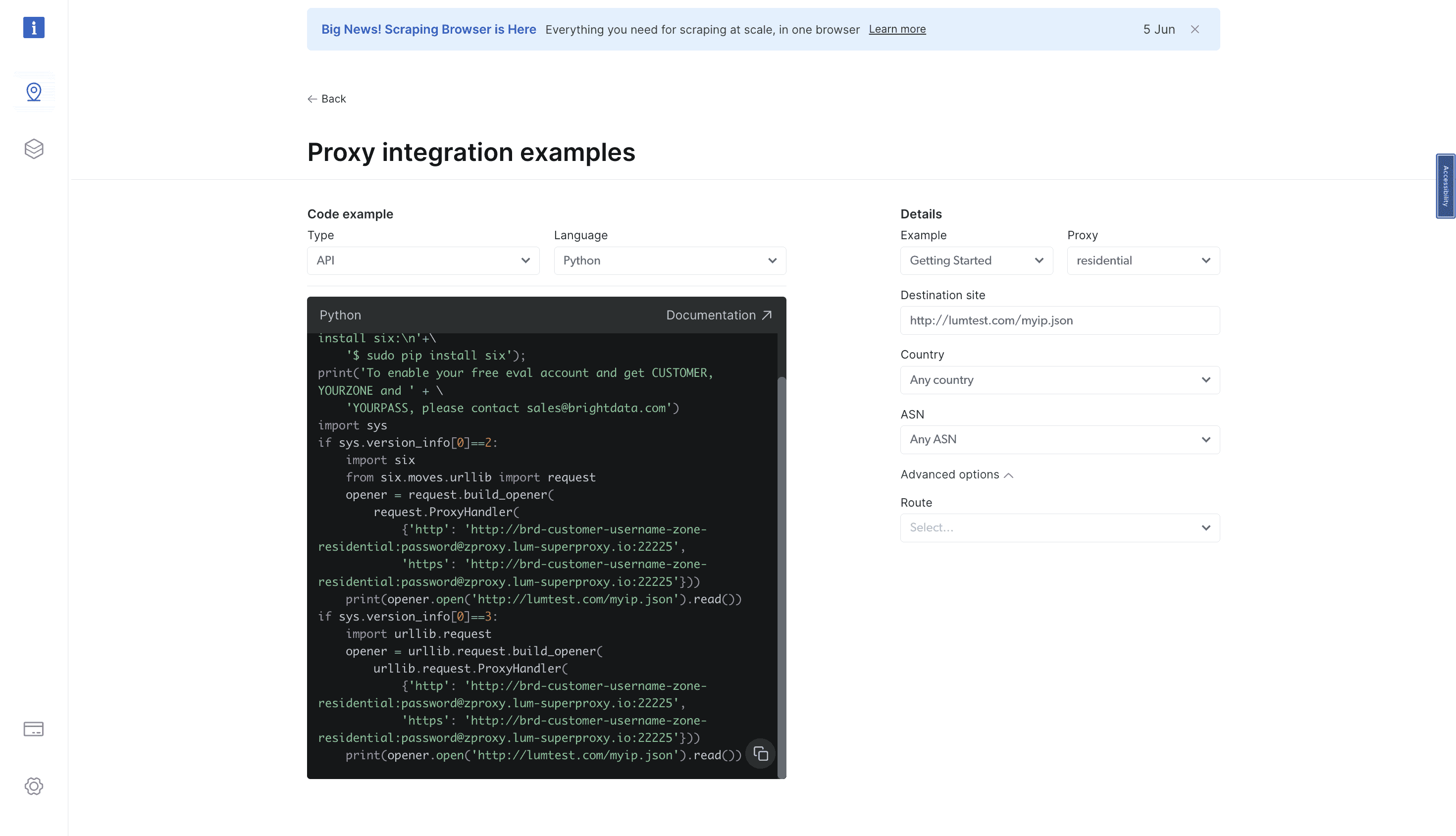
The provider gives you more ways to integrate proxies, namely using the browser extension or its open source proxy manager. The latter is especially useful, as it provides much more detailed usage logs, enables better rotation settings, and has the ability to route traffic through more advanced (and expensive) proxy networks if a request fails otherwise.
Bright Data has put a lot of effort into statistics, with several ways to reach them.
- A quick toggle in the Zones page. It gives you a visual overview of your bandwidth and request use.
- A tab with usage statistics per proxy network and a customizable graph.
- Usage statistics and graphs for each zone in its settings.
Each way provides flexible filtering options. You can a time period ranging anywhere between one hour to two years. The metrics include not only bandwidth expenditure but also number of requests, and in some cases error rate.
If you use Proxy Manager, it’s possible to display its statistics on the dashboard, as well. Bright Data even provides a way to separate API and Proxy Manager traffic in some of the graphs.
One more useful feature is network status. It shows the uptime of each service in real time and can notify you via email if something goes down.
Public API
Bright Data offers an API for managing the proxy servers programmatically. It’s the most comprehensive and granular API I’ve seen in this industry, and you might have to get a degree to make full use of it.
Documentation
With such a complex service, Bright Data needs to have appropriate documentation to make sense of it. And it does. You’ll find answers and instructions both in text and video formats.
Perhaps your first resource should be Bright Data’s documentation hub. It answers all the basic questions about using the service, and then some. Then, there are webinars – they cover narrower concerns, such as reCAPTCHA avoidance and browser automation. Finally, there are Bright Data’s tutorials videos, though they look pretty much outdated and abandoned in comparison.
Hands-On Support
If, by any chance, you won’t find your answer – or simply get lost looking for one – there’s the hands-on support.
Bright Data offers a ticket system on the dashboard. Customers that commit to a plan also get an account manager. Else, you can contact the provider using WhatsApp, Telegram, and even a phone.
We found the answering time to be fast: we sent multiple email messages throughout the day, and a reply came in 14 minutes on average. Communication with account managers is even faster, but they don’t work round the clock.
However, the customer service isn’t equal for all. Bright Data has segmented and commercialized its functionality by introducing tiered support packages. The base one doesn’t even get 24/7 replies, unless serious technical issues occur.
Conclusion
Bright Data calls itself world’s #1 web data platform, and testing it gave us compelling reasons to believe the claim.
The proxy networks we’ve tried were excellent: fast, stable, and large. They come full of features, and Bright Data makes sure to provide the tools to make best use of them. Pound for pound, there are few providers that can compare.
However, the privilege comes at a cost. Some may be put off by how technically complex Bright Data is; others may find its compliance process too invasive; but most likely, the main showstopper – if any – will be the price. It’s hard to find a provider that’s more expensive.
But if you don’t find price an issue, Bright Data really is one of the best options you can get.
Bright Data Alternatives

Bright Data’s closest competitor in the premium segment. It offers all the main proxy types and multiple APIs for web scraping, coupled with personalized customer service.

Decodo is a great choice if you want to save some money on rotating proxies. It offers multiple IP types, better prices, and is easier to use in exchange for fewer features.
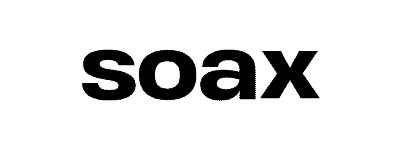
SOAX can be a good option if you need precise locations but don’t want to pay Bright Data’s premium. It supports region, city, and ASN targeting out of the box.
Want more? View the full list of the Bright Data alternatives.
Recommended for:
Enterprise customers or those who need advanced features.
Add up to $500 to your account and get double the amount.

Add up to $500 to your account and get double the amount.
